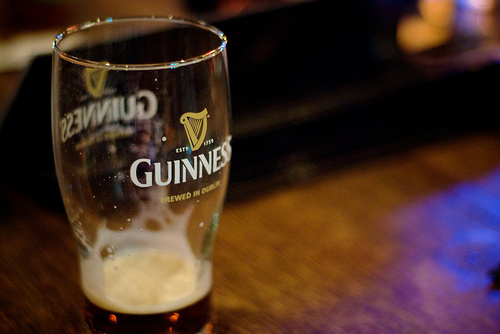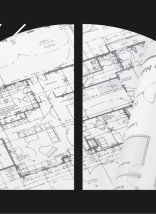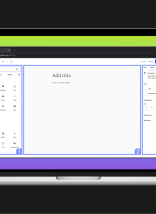You’re thinking one of two things: “How on Earth can you compare brewing beer to building a website?” Or, “oh no, not another analogy!” Either way, stay with me here. Comparing brewing beer to making a website may not be as far-fetched as one might assume.
It’s no secret, I love beer. When I’m not talking about web design, I’m talking about beer and my homebrewing hobby. So naturally, this is where my “water cooler discussions” usually end up. What I’ve found from these conversations is that I have a lot of co-workers that love beer too. If you weren’t aware, we have 3 homebrewers, 1 ex-commercial-brewer, and about 25 or more avid beer fans in our office.
Fanboys aside, designing a beer and the process of brewing is similar to the planning and developing of a website. Both industries have a handful of key ingredients and important factors:
- The concept or idea
- The purpose and end-goals
- The foundation
- The experience
- The consumers and keeping them coming back
When these factors come together in harmony, we’re left with a product that makes both the brewer (or web designer and client) and the consumer equally happy. And, on the other end, if these factors don’t jive, we’re left with a sad product that doesn’t sell.

The Concept or Idea
In order to craft a great beer, you first need a solid idea. What kind of beer are people drinking? How saturated is the market? What kind of beer do I want to make? These are just some of the questions any product design phase. They’re necessary because they help you focus on your concept. Going too broad too soon could result in failure. So, we focus on what will work for now. Once we build up a following, then we can begin to introduce all those other ideas or recipes floating around in our head.
So, I’ve done my research and I’ve found that most people in Raleigh seem to like pale ales. There’s already a few local breweries that make this style. But, there’s room for competition since the demand is so high. Now that we have a style chosen for our flagship, it’s time to plan and test the recipe. We find some friends, invite them over, and have them taste our latest batch of beer. We might even submit our idea to a panel of experts looking for feedback. In the homebrew world, this panel of experts are judges at a local competition. Regardless, every person along the way helps us formalize our concept–making it stronger.
Then, we need a catchy name. The name needs to say it all. And, most of the time, it needs to not have been used before. We’ll call our pale ale “Crabtree Pale Ale.” This name not only suggests the hoppy and dry finish we’re going for, but it means something to my local market too. I can already picture the label.
The Planning and End-Goals
Fully understanding the purpose of your concept can help you derive your end-goals. And, properly planning this execution is vital to success. This would be like understanding and formulating your recipe to suit a particular beer category. What flavor, aroma, and texture components are necessary to the style? What ingredients are used to achieve this complexity? And, most importantly, what can we do to keep this product on or under budget without sacrificing quality?
We’re making a pale ale, so we need a final beer that is relatively clean, moderately hoppy or bitter, and maybe a touch citrusy. The final product should also be pale and clear. There’s a few malts that we can choose from to create the flavors we want, as well as, a whole-host of American hops that will fit the profile.
It’s no coincidence that planning and end-goals are so closely related to the concept. What you’ll find is that there’s a lot of reliance on, or blending of, each of these steps. This is necessary to achieve the best product possible. This is also why it’s important to have all the moving parts under one roof.
The Foundation
Arguably, the most important ingredient in beer is water. In fact, beer is comprised mostly of water. Therefore, water quality naturally plays the biggest part. Many brewers treat their water to achieve the profile appropriate for the beer style. Whether we want hard or soft water, it is much like choosing the right code base, e.g., .Net or PHP. Each has it’s own advantages and disadvantages. Water can accentuate hop flavor or malt flavors. It can affect the efficiency of our mash (similar to making tea with grain). And, if you’re like me, this complicated chemistry gives you a headache, much like the programming languages and networking/hosting required for making a website.
The quality and balance of your code and HTML is much like water in brewing. Bad code can really ruin a website, and chlorine can ruin a beer. Gross.
The Experience
The overall experience, or taste of the beer, is crafted in part by the water quality, as well as, the ingredients and techniques used during the brewing process. In web design, this crafting is done by our User Experience (UX) Designers. They’re major players throughout the entire life-cycle of the project. Everything that is done passes through their UX filter. Their chief concern is always how the end-user will experience and use the website. For beer, if a flavor component is off, the consumer will reject it because it doesn’t taste right or it is too hard to drink.
This “experience layer” in brewing has many moving parts. There’s the malt, the hops, the pH balance of the water, and the temperature control (at each step). And, if the style requests, a spice or adjunct may be in the mix.
Malt brings sweetness and potential alcohol. Hops brings bitterness or balance (it also preserves the beer). Chemicals in the water accentuate each of these flavors as well as improve the efficiency of the process. But, temperature control can easily become the biggest player in the result of the final product. I can add the right amount of hops, but if I mash too cool, then I won’t have enough residual sweetness to balance the beer. I’ll be left with a harsh, thin, liquid. Been there before.
This is much like adding lots of eye-candy, frills, and information to your site, only to find that you didn’t pay attention to what the users (not you) are looking for from your website. If the frills don’t help the experience, then don’t add them. And, like-wise, if all the moving parts parts (designers, developers, marketing, and UX) don’t come together in perfect harmony, something might break.
The experience is a double-edged sword. It’s all about balancing the frills and ingredients to achieve the perfect experience.
The Consumer and Keeping Them Coming Back
You may have noticed that I left one key ingredient out of my beer analogy so far. That is yeast. Yeast is our consumer. And, so is the actual consumer. But, to be fair, yeast is the first organism consuming our beer.
During the entire process, you’re attempting to make a sugary water extract, called wort, that will be like a Candy Land for these tiny single-celled creatures. Unfortunately, though, it’s not as simple as that. If you mash the malt too high, you’ll be left with an un-fermentable extract. Essentially, you’ve made a beer with too much sweetness. Or, a website with too many frills and not enough digestible substance. This could be too much content or, conversely, too much JavaScript fanciness hiding the lack of precision. We want those yeast cells to consume and multiply. We want them to have families that consume the beer too.
Another potential problem is not adding the right amount of yeast. This would be comparable to hitting the market without proper marketing. What happens? The fermentation happens too slow resulting in off-flavors. And, possibly, you end up with a stuck fermentation. In the product world, this is slow growing and painful return on investment. Or worse, no growth at all.
There’s lots of ways to keep the fermentation going, or entice the consumer. We could control the temperature, making sure it’s appropriate for growth. We could use the appropriate yeast and pitch the perfect amount of it. This is similar to choosing the right target audience and controlling the amount of marketing. During the products life, how much marketing are you investing into your product?
Or, if the style allows, stick the beer in the corner and allow it to open ferment at what ever temperature it gets in the room during the day. This would be like viral marketing–letting the consumer run with it! But, then again, it all comes back to the initial concept: what style or what am I selling? And, how do you market the product appropriately?
Final Product
Once the yeast has done it’s thing, you’ve got a tasty beverage waiting for you in the icebox. So, sit back, relax, and enjoy the product you’ve created. And, if you venture beyond the hobby, maybe it’ll make you lots of money one day. Cheers!
By the way, what’s your favorite beer?









